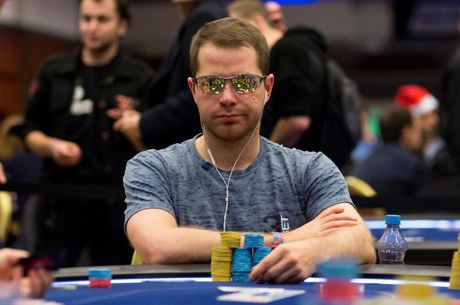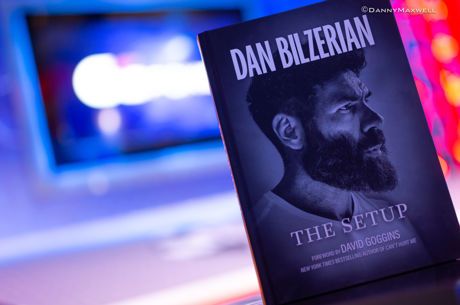PokerNews Book Review: "Bluffs" by Jonathan Little and Albert Hart

Poker players — a question for you. Do you bluff enough?
Most of us know instinctively that in most games we can't always wait for hands and strictly bet for value. Sometimes we must bet when we don't "have it," both to have a chance to win when we haven't made our hands, and to get value those times when we do have strong hands and wish to be rewarded.
If we don't bluff enough, we lose out on pots we might have "stolen" with bad hands. And we probably aren't getting called as much as we should with our good hands, causing us to lose out even more.
If you're looking to improve your understanding of bluffing in no-limit hold'em, Jonathan Little and Albert Hart have some ideas to share. Their newly co-authored title Bluffs: How to Intelligently Apply Aggression to Increase Your Profits from Poker presents a thorough discussion of numerous bluffing situations as a way to encourage readers to incorporate increased yet carefully considered aggression into their game.
18 Different Bluffing Situations
The book is primarily comprised of 18 distinct chapters, each focusing on a particular bluffing situation with nearly half of them coming before the flop, many more on the flop, then just a couple each for the turn and river.
The initial eight chapters covering preflop bluffs concentrate on commonly faced situations such as squeezing over a raise and call or open-pushing when short-stacked, while also covering less specific situations and more generally advising readers how to start open-raising or three-betting with a wider range of hands.
Six more chapters look at flop situations such as continuation betting after having raised before the flop, leading the flop, and floating (as a prelude to a later-street bluff). The two chapters dealing with turn play cover bluffing when the boards become scary and bluffing when the turn doesn't significantly change the board. Then the two river chapters focus on the big overbet (say, when a scary card falls) and the seemingly "obvious" value bet (that is, in fact, a bluff).
Organizing the book according to the four betting rounds and these common, distinct bluffing situations is helpful for a couple of different reasons.
For those readers who are tight players inclined to bluff only rarely — and without a great deal of comfort when doing so — starting with a review of various preflop bluffs to try is a good way to encourage thinking about ways to break out of the bet-when-you-have it, fold-when-you-don't mindset.
Picking Spots, Opponents and Boards to Bluff
The first three chapters in particular can be eye-opening for such players, starting with the first one covering how to "Open Raise with a Wider Range" and discussing open-raising from different positions, sizing your opens and recognizing situations when it makes sense to open-raise more widely — e.g., when opening from late position, when only tight players are left to act or when your image is tight.
The next chapter showing readers how to "Attack Limpers" (with the advice being especially player-dependent) is helpful, too, while the third discussing "3-Betting Preflop with a Wider Range" perhaps represents the first type of bluffing the book covers that many amateur players — and even some experienced ones — typically avoid altogether.
As the authors explain, many players only three-bet before the flop with the topmost starting hands (aces, kings, queens and ace-king), while some others will add some other strong starters in a way that never includes three-bet bluffing. From there, the discussion turns to consider three-betting with a polarized range — i.e., with the strong hands worthy of reraising and with hands too weak to be merely calling raises — and how the preflop three-bet bluff shouldn't be considered a "one-street bluff," as often you'll need to follow it with a continuation bet as well.
Things get a little more complicated after the flop — whether you're bluffing or not — which is another reason why it's helpful of the authors to focus on these several preflop situations first (especially for less experienced bluffers). Each chapter begins with a clear explanation of the move being introduced, then includes illustrated hand examples corresponding to the play to help clarify the intended advice.
Moving into those flop chapters, they begin with a thorough discussion of continuation betting (one of the book's longer chapters), which takes into account flop texture, opponents' tendencies and tells and bet-sizing. For seasoned players, this might be mostly review. It's nonetheless helpful to keep in mind how even a "standard" continuation bet is often technically a bluff and thus must be approached with the same awareness of your image (and credibility) and what your opponents are capable of given their tendencies, potential ranges and the board.
The short chapter on how to "Bet to Increase Your Equity" that rounds out the flop section also presents helpful, concrete advice regarding a special situation of bluffing multiple opponents with an idea to reduce the field and make decisions easier on the turn and/or river.
As noted, the two turn chapters include one discussing how to "Attack Scary Boards," presenting examples that range from semi-bluffing with a draw to bluffing with complete air — including when and how to deliver an aggressive check-raise turn bluff. Then the two river chapters include one on "River Over-Betting," describing what kinds of boards and situations best suit that big river bet your opponent just can't call.
Make Knowledgeable Bluffs and Make Your Opponents Make Mistakes
Besides the general encouragement to players to be more aggressive (as you'd expect from a book about bluffing), the book has a few other frequently evoked themes.
Assessing opponents' tendencies is perhaps the most important of these themes, with the authors consistently reminding us not to bluff tight players, to be more encouraged to bluff loose ones and to always be keeping track of how others respond to aggression, generally speaking. The idea of "getting out of your comfort zone" is also repeatedly evoked, with the authors in fact using that phrase as a heading for each of the (handy) end-of-chapter bullet points summing up the ideas just covered.
Little and Hart also want to be sure we don't take these ideas and "go out and blindly apply aggression," a directive that gets reiterated in an additional concluding chapter. Always be aware of how your opponents play and what their ranges might be when deciding whether or not to make that bluff. Be equally aware of how your image and range appear in order to assess more accurately whether or not a bluff will be believed.
A final appendix including 10 hands supplied by Hart and analyzed by Little works to reemphasize these themes as well as some of the more specific advice presented earlier.
Coming in at less than 200 pages, the slim volume travels well, too, making Bluffs handy to slip in a bag and carry to your next tournament. The organization according to bluffing situation also makes it easy to pick and choose certain moves and situations for extra review.
All of which is to say, with Bluffs the authors have made it easy for players wanting to incorporate more bluffs into their games to learn how to start doing so — all they have to do is pull the trigger and pick it up.
Bluffs: How to Intelligently Apply Aggression to Increase Your Profits from Poker by Jonathan Little and Albert Hart is .
Be sure to complete your PokerNews experience by checking out an overview of our mobile and tablet apps here. Stay on top of the poker world from your phone with our and Android app, or fire up . You can also update your own chip counts from poker tournaments around the world with MyStack on both Android and iOS.









